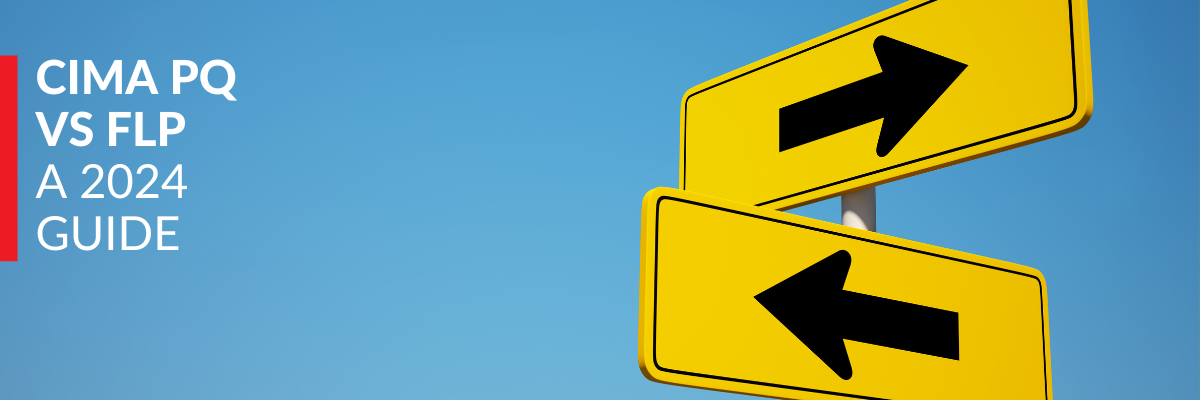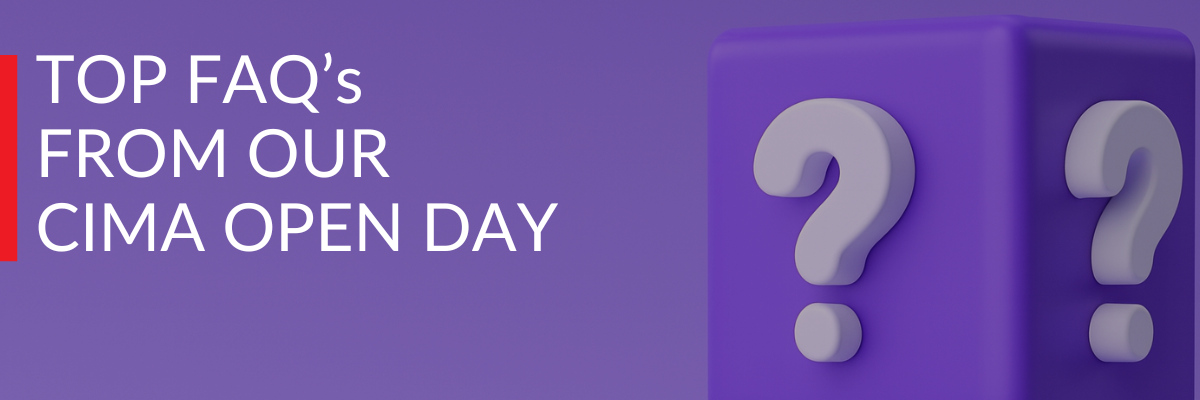There are two different ways to complete your CIMA qualification. The traditional Professional Qualification (PQ) Route and the streamlined Finance Leadership Programme (FLP). Both methods cover the same syllabus, teach the same competencies, and result in the same CGMA designation.
So, which one is right for you?
We've covered the differences between the two routes and discussed the benefits of each method to help you make a more informed decision before beginning or continuing with your studies.
What’s The Difference?
The major difference between the two routes comes in the course structure and examination process.
With the PQ Route, you are required to complete a total of 12 exams if you start from the Operational Level. This includes 9 Objective Tests - one for each E, P & F subject per level, and 3 Case Study Exams. At each level, you will need to pass all 3 Objective Tests to gain eligibility to attempt the Case Study and progress through the course. In addition to this, students starting from the Certificate Level will be required to complete an extra 4 OT exams before progressing to the Operational Level.
You will be required to study for each E, P & F subject separately, either by yourself or with the aid of a tuition provider.
The entire Finance Leadership Programme Route takes place on a single digital platform that contains all of the study material and assessments needed to work through the qualifications. Objective Tests have been removed and replaced by Continuous Assessments and quizzes that will test your knowledge as you move through the syllabus.
These differences in exam structure mean that each route might be better suited depending on your study habits and various other factors.
We’ve listed some notable points to consider when making your decision.
FLP Positives
- Faster - with FLP, it is possible to progress through the entire CIMA qualification in under two years. You can now also start the FLP programme from the Certificate Level.
- Cheaper (in the long run) - despite a larger fee upfront, the FLP programme works out to be more affordable than completing it subject by subject via the PQ route.
- Subscription-based - your subscription covers all your study fees, from study material to exam entry fees & rewrites. Being timebound by a subscription can also act as a motivating factor in working through the qualification.
- Condensed - All your study material/question practice/Case Study Prep and so much more are housed in one convenient online platform that you can access anytime, anywhere.
PQ Positives
- More thorough - you will be required to complete an Objective Test for each subject. This means you will have to truly acquaint yourself with the intricacies of each subject and then pass an exam for each one. This additional practice could help you in retaining the course material.
- Flexibility - You are able to progress through the course at whatever pace you choose without being bound by the subscription. You can complete 3 subjects this semester and 1 the following, or however you see fit. This makes it easier to take an extended break due to unforeseen circumstances should you need to.
- Offline studies - for some people, having a physical book to study from can make the world of difference. While you can still purchase additional course material when doing the FLP route, the PQ route will force you to study out of a textbook and cover the entire subject’s syllabus.
- Smaller payment initially - while the total cost of completing the PQ Route works out to be more expensive in the long run, the incremental payments will be smaller and this could be more manageable.
Both FLP & PQ have their positives depending on how you prefer to complete your qualification. Find out more on our Finance Leadership Programme information page.







